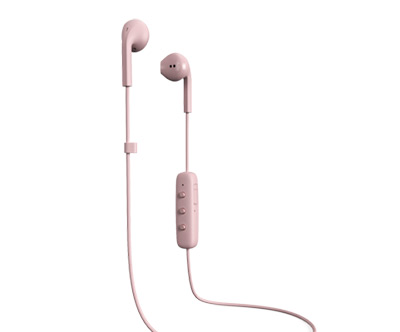 Afrikaans
Afrikaans  Albanian
Albanian  Amharic
Amharic  Arabic
Arabic  Armenian
Armenian  Azerbaijani
Azerbaijani  Basque
Basque  Belarusian
Belarusian  Bengali
Bengali  Bosnian
Bosnian  Bulgarian
Bulgarian  Catalan
Catalan  Cebuano
Cebuano  Corsican
Corsican  Croatian
Croatian  Czech
Czech  Danish
Danish  Dutch
Dutch  English
English  Esperanto
Esperanto  Estonian
Estonian  Finnish
Finnish  French
French  Frisian
Frisian  Galician
Galician  Georgian
Georgian  German
German  Greek
Greek  Gujarati
Gujarati  Haitian Creole
Haitian Creole  hausa
hausa  hawaiian
hawaiian  Hebrew
Hebrew  Hindi
Hindi  Miao
Miao  Hungarian
Hungarian  Icelandic
Icelandic  igbo
igbo  Indonesian
Indonesian  irish
irish  Italian
Italian  Japanese
Japanese  Javanese
Javanese  Kannada
Kannada  kazakh
kazakh  Khmer
Khmer  Rwandese
Rwandese  Korean
Korean  Kurdish
Kurdish  Kyrgyz
Kyrgyz  Lao
Lao  Latin
Latin  Latvian
Latvian  Lithuanian
Lithuanian  Luxembourgish
Luxembourgish  Macedonian
Macedonian  Malgashi
Malgashi  Malay
Malay  Malayalam
Malayalam  Maltese
Maltese  Maori
Maori  Marathi
Marathi  Mongolian
Mongolian  Myanmar
Myanmar  Nepali
Nepali  Norwegian
Norwegian  Norwegian
Norwegian  Occitan
Occitan  Pashto
Pashto  Persian
Persian  Polish
Polish  Portuguese
Portuguese  Punjabi
Punjabi  Romanian
Romanian  Russian
Russian  Samoan
Samoan  Scottish Gaelic
Scottish Gaelic  Serbian
Serbian  Sesotho
Sesotho  Shona
Shona  Sindhi
Sindhi  Sinhala
Sinhala  Slovak
Slovak  Slovenian
Slovenian  Somali
Somali  Spanish
Spanish  Sundanese
Sundanese  Swahili
Swahili  Swedish
Swedish  Tagalog
Tagalog  Tajik
Tajik  Tamil
Tamil  Tatar
Tatar  Telugu
Telugu  Thai
Thai  Turkish
Turkish  Turkmen
Turkmen  Ukrainian
Ukrainian  Urdu
Urdu  Uighur
Uighur  Uzbek
Uzbek  Vietnamese
Vietnamese  Welsh
Welsh  Bantu
Bantu  Yiddish
Yiddish  Yoruba
Yoruba  Zulu
Zulu Feeder Conveyor System for Efficient Material Handling Solutions
Understanding Feeder Idlers Their Importance and Function in Material Handling Systems
In industrial operations, the effective transportation of materials is crucial for efficiency and productivity. One key component that plays a significant role in material handling systems is the feeder idler. This article delves into the nature of feeder idlers, their functions, types, and importance in various industries.
What is a Feeder Idler?
A feeder idler is an essential part of a conveyor system that aids in the movement of bulk materials. It is specifically designed to support the weight of the conveyor belt while ensuring the smooth transfer of materials along the conveyor line. Typically constructed from robust materials, feeder idlers reduce friction and wear, ultimately extending the lifespan of the conveyor system.
Functions of Feeder Idlers
Feeder idlers perform several critical functions in a conveyor system
1. Support and Alignment They provide necessary support to the conveyor belt, maintaining its alignment and preventing sagging. This is vital for ensuring materials move smoothly and reducing the risk of jams or misalignments that can disrupt operations.
2. Material Flow Regulation By controlling the tension and speed of the conveyor belt, feeder idlers help regulate the flow of materials. This ensures that items are neither too fast nor too slow, which can affect operational efficiency.
3. Reducing Wear and Tear A well-designed feeder idler minimizes friction between the belt and the support structure. This significantly reduces wear and tear on both the belt and idlers themselves, leading to lower maintenance costs and extended equipment life.
4. Noise Reduction Many feeder idlers are engineered to minimize noise, which is particularly important in industrial settings where loud machinery can pose safety hazards or lead to employee fatigue.
Types of Feeder Idlers
feeder idler

Feeder idlers come in various types, tailored to specific applications and environments
1. Flat Idlers Commonly used in standard conveyor systems, flat idlers provide a flat surface for belts that carry lightweight materials.
2. V-Guide Idlers Designed to keep conveyor belts aligned, V-guide idlers are particularly beneficial in applications where precision is paramount.
3. Impact Idlers These are robustly constructed to absorb the impact of heavy loads, making them ideal for bulk material handling.
4. Return Idlers Positioned on the return side of the conveyor belt, these idlers ensure that the belt maintains proper tension and alignment as it returns to the loading area.
Importance Across Industries
Feeder idlers are vital in various industries, including mining, agriculture, manufacturing, and logistics. In mining, for example, they transport heavy loads of minerals from extraction sites to processing facilities. In agriculture, feeder idlers are used in grain handling systems to move crops efficiently from harvest to storage.
In manufacturing, these components assist in the assembly lines, where speed and efficiency are crucial. In logistics, feeder idlers support systems that transport packages and goods, improving overall throughput and reducing handling time.
Conclusion
In conclusion, feeder idlers are indispensable assets in material handling systems across different industries. Their ability to support conveyor belts, regulate material flow, minimize wear, and reduce noise ensures that operations run smoothly and efficiently. Understanding the significance and functionalities of feeder idlers can aid companies in optimizing their conveyor systems, leading to enhanced productivity and cost-effectiveness. As industrial demands evolve, continuous improvements in feeder idler technology will undoubtedly play a pivotal role in shaping the future of material handling.
-
Revolutionizing Conveyor Reliability with Advanced Rubber Lagging PulleysNewsJul.22,2025
-
Powering Precision and Durability with Expert Manufacturers of Conveyor ComponentsNewsJul.22,2025
-
Optimizing Conveyor Systems with Advanced Conveyor AccessoriesNewsJul.22,2025
-
Maximize Conveyor Efficiency with Quality Conveyor Idler PulleysNewsJul.22,2025
-
Future-Proof Your Conveyor System with High-Performance Polyurethane RollerNewsJul.22,2025
-
Driving Efficiency Forward with Quality Idlers and RollersNewsJul.22,2025





























